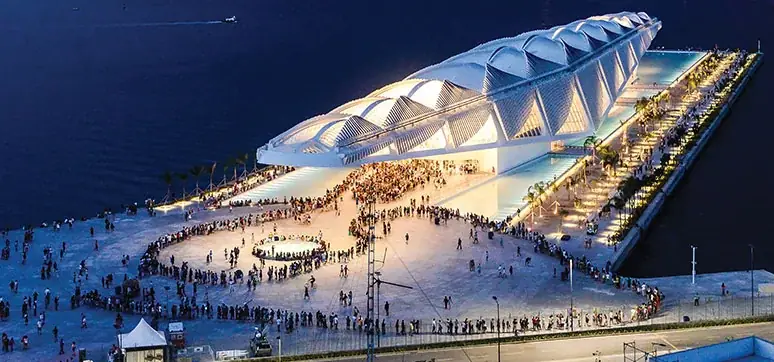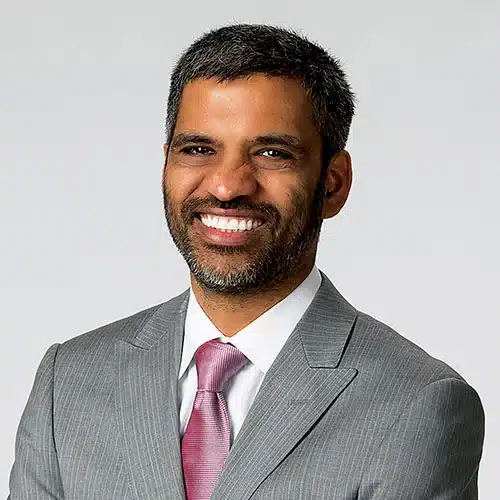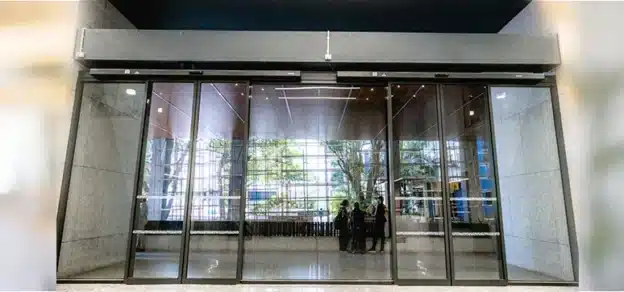Tell us about USGBC and its role in the ratings and certification of buildings.
For more than 25 years, the U.S. Green Building Council has been dedicated to building an awareness of the impact buildings have on the environment and human health. With the evolution of LEED and the incredible support of our partners, we have established an entire community of sustainability leaders around a common cause: better buildings equal better lives.

Over the last two decades, the LEED plaque has become the symbol of green building leadership. Today, people know that if they are in a LEED-certified building, they are using less energy and water, avoiding waste, saving on maintenance costs, improving indoor air quality, offering comfort to their occupants, and creating a less environmental burden on their community. With 110,000 registered and certified LEED commercial projects and nearly 2 million+ registered and certified residential units, LEED is reducing carbon emissions, fighting climate change, and improving people’s quality of life across 182 countries and territories around the world. In fact, the business case for LEED is so powerful, we have expanded from a single building approach to one that addresses the sustainability of entire cities and communities, as well. This is change on a grander scale.
Could you please tell us about the different certifications administered by GBCI? Is it different from those of USGBC? Can you explain the fundamental difference between LEED Standards for India by IGBC and those by USGBC?
GBCI was founded in 2008, to drive the implementation of the LEED rating system and, as evidenced by the statistics, LEED has become the most widely used green building program in the world. In our most recent update, LEED v4.1, we have raised our energy reference standard and added a carbon metric for new and existing buildings. We have also made improvements to the renewable energy credit and updated the materials credits to address embodied carbon through Whole Building Life Cycle Assessments and tools like Environmental Product Disclosures. And, importantly, LEED v4.1 is the first true performance standard for green buildings. Leaders lead with LEED because it is the only rating system in the world that seamlessly connects buildings to communities to cities through its focus on performance.

In addition to the continuous improvements and forward-thinking additions we’ve made to LEED, a few years ago, we began thinking about how to expand on that extraordinary legacy by administering complementary rating systems. GBCI now has a suite of nearly 10 certification programs and 15 professional credentials that cover nearly every facet of the sustainability industry. We have SITES for sustainable landscapes, RELi for resilient design, and PEER for smarter and more reliable power systems, to name a few. While LEED is still at the heart of everything we do, we want to equip our community with the best in class market tools for leading their transformation efforts across all areas of the built environment.
In terms of environmental sustainability, how exactly are USGBC recommendations and standards effective?
LEED has transformed traditional building design and construction practices. LEED buildings save more energy, water, and waste than traditional construction which is evidenced by the thousands of case studies that demonstrate their environmental, economic, and social benefits. Research has shown that what people want most are ways of having a better day-to-day experience – they want cleaner air, less waste, lower energy, and water use. People now recognize the impact these factors have on their quality of life, which is why LEED buildings have higher rental and property premiums and occupant satisfaction. Even non- LEED buildings draw inspiration from LEED strategies, such as daylighting, enhanced indoor air quality, biophilic design, etc.

LEED provides an effective tool to minimize the environmental burden of urbanization and population growth. In the last two decades, rapid urbanization has elevated more than 1 billion people out of extreme poverty. In the absence of LEED and USGBC’s efforts, that progress would have come at a very significant impact on the environment. We can balance growth with environmental burden while also inspiring a new generation of leaders to innovate on this progress and help us tackle the single largest existential crisis of our lifetime: climate change.
Where does India stand today, and how much further do we have to go to either create or convert buildings so that they comply with LEED principles?
India is the third-largest region for LEED outside of the US and thanks to the hard work of our GBCI India team on the ground, we have established strong partnerships which help to accelerate awareness and adoption. But we can do more.

India is hurting. Sadly, the pandemic has brought to light the inextricable link between the environment, human health, and the economy. Climate disasters caused more internal displacement than war in 2020, and India had 929,000 disaster-driven internally displaced people last year alone — making it second only to Afghanistan, which had over a million. That, on top of a public health crisis that shut down the global economy and overwhelmed an already burdened health care system.
As we emerge from this pandemic, we can no longer treat public health, climate change, economic recovery, and growth as single-issue topics. We must recognize the intersectionality of these issues to emerge stronger in a complicated, post-pandemic world. The primary message we need to convey is that buildings are part of the solution. By prioritizing sustainable, healthy, equitable, and resilient design into everything we do, I am confident we can tackle climate change and lift people out of extreme poverty. LEED can not only play a role but deliver on this important outcome for millions of Indians.

Tell us about your role as President and CEO of the U.S. Green Building Council?
As President and CEO of USGBC and GBCI, I have the great privilege of leading an incredible community, dedicated to creating market solutions that address the harmful impacts that the building industry imposes on our environment, our health, and the global economy.
Over the years, I’ve traveled to nearly every state in the U.S. and many countries around the world to see the impact of our work and how we can all work together to build a better future. It is so energizing for me to connect with people and hear stories about how green buildings have made a personal impact on them and their communities. Whether it’s a story about rebuilding a town after a devastating flood, or reducing energy costs in a school to fund a teacher’s salary, or building a resilient energy grid so that a hospital can continue to provide emergency services in a blackout – reflecting on all of these incredible stories inspires me.
And I know that it is the most vulnerable among us that feel the gravest impacts of climate change so there isn’t a day that goes by where I don’t consider that in my decision-making. We must continue raising the bar on the industry – pushing the richest and most ambitious to reach for the stars, but we must also provide solutions for the most vulnerable among us – we cannot do one without the other.

What drove you to select a career in sustainability?
Growing up in Chennai, “sustainability” wasn’t a buzzword in my family, it was a simple fact of life. With an income equivalent to about 50USD/month, my parents somehow managed to pay for my education entirely and support my brother and me. I feel extremely fortunate to be where I am today. At the same time, I know there were others less fortunate than me. There were children in my neighborhood who went to school just for the free meal provided, and many of them lived in rags. It’s a sad state when starvation leads to education. I am dedicated to working towards improving the quality of life for all. I believe a higher living standard is what every person on the planet deserves and leading a long and healthy life shouldn’t be a privilege but a basic right for everyone, regardless of their circumstance.
Please tell us briefly about your professional journey and milestone achievements? Also tell us about a few of your sustainable projects, which are considered milestones
My professional journey began in technology, after graduating from Annamalai University with a degree in Computer Engineering, I led a succession of groundbreaking business transformation programs for both IBM and Lenovo. When I started at USGBC, I led the technology department, before becoming COO, and later succeeding our founder and CEO, Rick Fedrizzi. I saw USGBC as an opportunity to pay it forward and utilize my successes in the global market transformation to achieve a higher living standard for all.

Over the years our team has reached some incredible milestones, delivering market solutions that affect the lives of billions of people around the world. Some of those achievements include the launch of LEED v4 and v4.1, the development of the LEED for cities and communities rating systems, the launch of the Arc platform, the Living Standard campaign, the introduction of LEED Zero certification, USGBC’s Four Pillars strategy which includes our the All-In for Equity program, the LEED Safety First Pilot credits released in response to COVID-19, the Healthy People in Healthy Places Equals a Healthy Economy strategy, the launch of USGBC Live and numerous Greenbuild events.
I have also had the great pleasure of visiting some iconic LEED buildings, such as Taipei 101 in Taiwan, the Salesforce Tower, in CA, USA and the Olympic House in Lausanne, Switzerland to name a few. And I look forward to visiting
many more in the future!
The façade industry has seen a dramatic rise in the use of many innovative materials for the façade and cladding. According to you what are the key factors to consider while choosing the materials for façades?
There is a lot of literature and knowledge about the various factors that influence the materials for façades which has significantly helped to advance the green building agenda. From my point of view, I strongly recommend prioritizing making sure materials are sustainable and healthy. That is why we made materials a primary focus of LEED v4 and v4.1, calling attention to tools like Whole Building Life Cycle Assessment and Environmental Product Disclosures, to weigh options for building design and materials selection with lower carbon impact. We also established a Better Materials platform to help project teams and manufacturers prioritize sustainable material selection. By prioritizing the “embodied carbon” of materials – how they are extracted, manufactured, distributed, used, and recycled – we can encourage better material use in the market and accelerate our vision for a sustainable, healthy, equitable, and resilient future.

In your opinion, what is the greenest type of façade?
Sustainability depends on a variety of factors like local climate, material access, and building type. The greenest type of façades is one that takes a holistic and integrated approach to prioritize multiple attributes, such as whole building life cycle assessment, environmental product disclosures durability, and “embodied carbon”.
We should also be thinking about the supply chain. LEED’s Social Equity within the supply chain pilot credit incentivizes the use of products that protect human rights at every stage – from the extraction of raw materials all the way to final assembly – in the supply chain. Again, we can no longer think of these concepts in isolation – everything must be taken into consideration. It’s all connected.
Biophilia, parametric designs, biomimicry, etc. are a few buzz words in the façade design now? What is your opinion on such new ways of thinking? Many architects consider them too complex.

I see these trends as a revitalization of integrative design principles which seek to incorporate nature into the built environment. We often think of our world diametrically, with a built environment and a natural environment in conflict but nature can provide important emotional, spiritual, and health benefits. Biophilic design is used to increase a building occupant’s connection to nature using natural daylight and water features; visual connections with nature and natural systems; and things like changes in temperature, humidity, and airflow that mimic natural environments. The concept has credence because it can reduce stress, enhance creativity and cognitive function, and improve health and wellness. People might not necessarily connect a carpet that looks like a riverbed to nature more than a real wood floor, but both are important sources of direct and indirect nature in biophilic design. By emulating and including nature in design, we are designing a world that is built for human health with the lowest environmental impacts possible.
The last year has shown how isolation and access to the outdoors impact mental health and wellness. We are born to be connected to nature so the more we connect the built environment to nature and nature to the built environment the better and stronger our emotional health will be.
How important is the proper design and installation of windows for user comfort and energy conservation?
Passive building design techniques play a crucial role in the energy efficiency of a building. Proper installation of windows is a precursor to preventing unnecessary leakages in the building envelope. In design, however, there is room to be creative and allow building occupants more agency in creating comfortable spaces that also improve energy efficiency. With strategic window placement, both operable and inoperable, we can manipulate lighting, heating, and cooling loads and still create spaces for well-being that incorporate natural light, views of nature, and the potential for manual ventilation. Plus, as I was just saying, isolation and connectivity are important for human health and wellness and windows play a crucial role in that.
What is your advice to young architects and students?
I believe that sustainable living is not just about the physical building and rebuilding of our communities, but ultimately about our willingness to reimagine the way we treat each other. I envision a world where construction is as much about compassion as it is about the convenience and efficiency of the structures themselves. And most importantly, we must recognize our universal responsibility to prioritize health and wellness, to make a commitment to the longevity of our planet, and to create a better quality of life for ourselves and future generations. Nobody is better equipped than young architects and students to lead the way and deliver that future. We have so much trust in the next generation, this is their opportunity to pay it forward.














